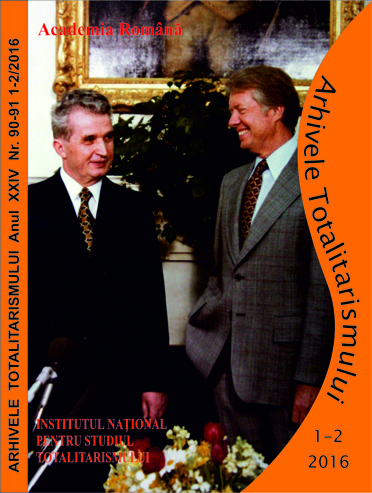Începutul colectivizării în nordul Moldovei și Bucovina.
The beginning of collectivization in Northern Moldavia and Bukovina.
The peasant rebellions and communist repression, 1949
Author(s): Adrian Constantin RotarSubject(s): History, Economic history, Political history, Social history, Recent History (1900 till today), WW II and following years (1940 - 1949)
Published by: Institutul National pentru Studiul Totalitarismului
Keywords: Collectivization; Romania; Peasant revolts; Repression; Deportations;
Summary/Abstract: After the switch in allegiance, and the step by step instauration of the communist regime in Romania, the rural population was gripped by a sense of unease regarding the future. This feeling was caused by the threat of a possible Soviet style collectivization. Things have become increasingly apparent with the implementation of certain measures, which had as end result the forcing of farmers to abandon land: imposing mandatory quotas, area threshing etc. All these measures, coupled with a collectivization campaign since March 1949, led to individual and collective peasant riots. These measures eventually led to direct confrontations between peasants and repressive forces (Militia and State Security) which resulted in casualties (Calafindești, Bălăceana, Frătăuții Noi etc.). The families of those shot during the direct clashes were deported to Dobrogea. They were joined by the families of wealthy peasants (“kulaks”) who were opposing the collectivization. The collectivization process was finalized in the North-Eastern area of Romania, but the atrocities which happened here and in other areas, led, in to a certain extent, to the bankruptcy of the communist regime.
Journal: Arhivele Totalitarismului
- Issue Year: XXIV/2016
- Issue No: 1-2
- Page Range: 122-140
- Page Count: 19
- Language: Romanian
- Content File-PDF

